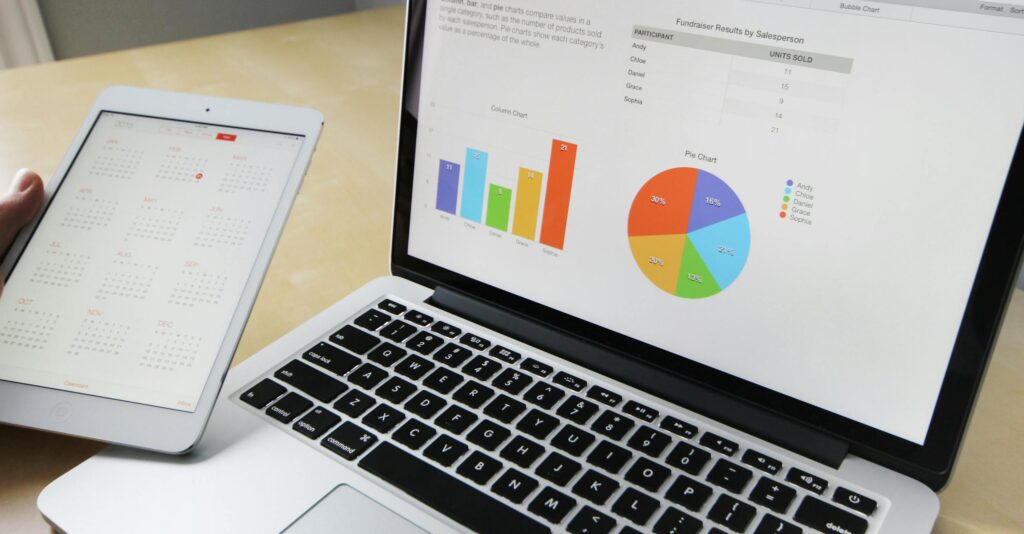Mortgage Interest Rates Drop To Benefit Homeowners In Refinancing
In early 2025, mortgage interest rates drop, giving homeowners a chance to refinance their existing loans. This change in the financial landscape is influenced by a combination of economic factors including recent tariff implementations and evolving market dynamics.
Mortgage Interest Rates Drop To Benefit Homeowners In Refinancing
With the recent Mortgage Interest Rates Drop, many homeowners who have closed on their home loans last year will greatly benefit. Both potential homebuyers and homeowners are taking the news of the Mortgage Interest Rates Drop as positive news. To join this great news are lenders. Lenders are expecting to have record refinance transactions this year with Mortgage Interest Rates Drop. The FED is expected to lower interest ratesdue to fears of inflation.
Mortgage Rates Today Versus Last Year
As of April 24, 2025, mortgage interest rates drop compared to last year, offering possible savings for homeowners who considers refinancing. Below is the mortgage rates of April 2025 versus April 2024. Data sourced from Mortgage News Daily and Investopedia.
| Loan Type | April 2025 Average Rate | April 2024 Average Rate | Year-over-Year Change |
|---|---|---|---|
| 30-Year Fixed | 6.94% | 7.38% | -0.44% |
| 15-Year Fixed | 6.16% | 7.08% | -0.92% |
| 30-Year Jumbo | 7.04% | 8.14% | -1.10% |
Mortgage Rates Are Dropping! Time to Refinance and Save
Contact us today to see how much you can save by refinancing your mortgage!
Reason For Mortgage Interest Rates Drop
Several elements have contributed to mortgage interest rates drop over the past year:
- Federal Reserve Policies: The Federal Reserve implemented three interest rate cuts in late 2024 in response to slowing inflation, indirectly influencing mortgage rates to decline.
- Economic Uncertainty: Recent tariff implementations and concerns over a potential recession have led investors to seek the safety of U.S. Treasury bonds, driving down yields and, consequently, mortgage rates.
- Housing Market Dynamics: According to the National Association of Realtors, 30-year fixed mortgage rates are expected to average around 6.0% in 2025, which may help stimulate both housing demand and building activity.
Implications for Homeowners
Refinancing when mortgage interest rates drop can lead to reduced monthly expenses and long-term interest savings. But it’s crucial to factor in closing fees, your homeownership timeline, and your broader financial goals before deciding.
Surge in Refinancing Activity
Mortgage interest rates drop has led to a significant uptick in refinancing applications. Refinancing activity surged by 35% over the last week, based on data from the Mortgage Bankers Association. They are up 93% from the same period last year. It’s clear that many homeowners are jumping at the chance to lower both their monthly mortgage bills and overall loan costs.
Benefits of Refinancing Now
Homeowners with mortgage rates above 7% can save hundreds of dollars monthly by refinancing to lower rates. With home values rising nationwide, many homeowners have increased equity, allowing them to tap into funds for debt consolidation, home renovations, or other financial needs through cash-out refinancing. Refinancing can shorten your loan term for example, from 30 years to 15 which may lead to major interest savings over the life of the loan.
Homeowners With 5% Or Higher Rates Will Benefit By Refinancing
Due to mortgage interest rates drop, any homeowners with mortgage rates higher than 5% will benefit from refinancing today. VA and FHA Streamline Refinances allow homeowners with FHA and/or VA Loans to do a no income doc, no home appraisal streamline refinance with all closing costs paid by the lender. FHA and VA Streamlines are a fast track refinance program where most borrowers can close their streamlines in 2 weeks or less. Gustan Cho Associates at NEXA Mortgage, LLC are direct lenders with no overlays on government and conventional loans and are experts in FHA and VA Streamline Mortgages.
Best Loan Options When Mortgage Interest Rates Drop
When mortgage interest rates drop, the best mortgage loan option for you depends on your goals whether you’re buying a home, refinancing, paying off debt, or reducing your term. Here’s a breakdown of the best mortgage loan types to consider when rates are low:
30-Year Fixed-Rate Mortgage
Best for long-term affordability and payment stability. It lock in a low rate for the life of the loan. It has lower monthly payments compared to shorter terms. This is great for first-time homebuyers or those planning to stay long-term. Why it’s great when mortgage interest rates drop? You can lock in a historically low rate for 30 years, protecting you from future hikes.
15-Year Fixed-Rate Mortgage
This is best for paying off your home faster and saving on interest. It has higher monthly payments, but significantly less interest paid. Builds equity faster. This is ideal if your income can support the higher payments. It’s great when rates drop because the rate difference between 15- and 30-year loans narrows, making this a powerful savings option.
Adjustable-Rate Mortgage (ARM)
This is the best option for short-term homeowners or buyers expecting to sell or refinance in 5–7 years. It has lower initial interest rates (usually fixed for 5, 7, or 10 years). It has potential for lower upfront payments. Why it’s great when rates drop? Initial ARM rates can be even lower than fixed rates, making this ideal if you’re not staying long. But, make sure you’re prepared for rate adjustments later if you keep the home beyond the fixed period.
Cash-Out Refinance
Best for homeowners with equity who want to consolidate debt or fund big expenses. This replace your current loan with a new one at a lower rate. Take out cash for home improvements, college, or paying off high-interest debt. It’s great when mortgage interest rates drop because you can lower your rate and get cash doubling the benefit.
VA Loan (Refinance or Purchase)
This is ideal for veterans, active-duty service members, and eligible surviving spouses. No PMI, no down payment. Streamlined Interest Rate Reduction Refinance Loan (IRRRL) available. It often lower rates than conventional loans. This is great when rates drop: VA loans already have great terms, but lower rates enhance the savings for eligible borrowers.
FHA Streamline Refinance
This is best for homeowners with an existing FHA loan. It doesn’t have income verification or appraisal required. Minimal paperwork and fast turnaround. It’s great when mortgage interest rates drop because you can refinance easily and quickly with fewer requirements and enjoy immediate savings.
Conventional Refinance
Ideal for homeowners with equity and good credit. It may remove PMI once you reach 20% equity. Access to competitive rates if your credit score is strong. Why it’s great when rates drop? Conventional refinances can drastically lower monthly payments or shorten your loan term.
Don’t Miss Out on Lower Mortgage Rates! Refinance Today
Contact us today to find out how refinancing can lower your payments and save you money.
How to Choose the Best Option
Ask yourself, do I want to lower my payment or shorten my term? How long will I stay in the home? Do I need cash for renovations or debt? What’s my current interest rate? A mortgage expert can help you run the numbers and compare options side by side.
Considerations Before Refinancing
- Closing Costs: Refinancing involves fees typically ranging from 2% to 5% of the loan amount. It’s essential to calculate whether the long-term savings outweigh these initial costs.
- Break-Even Point: Understand how long it will take before the savings from lower payments cover your refinance expenses. Refinancing may not be beneficial if you plan to move before reaching this point.
- Credit Score Impact: The interest rate you receive is influenced by your credit score, so keeping a good score on your credit can help you qualify for the lowest rate available.
Next Steps for Homeowners
If you’re considering refinancing, make sure to examine your current mortgage. Check your existing mortgage terms and interest rate. Calculate potential savings using online calculators or consult a financial advisor to estimate monthly savings and the break-even point. Check offers from different lenders to find the most favorable terms. And lastly, prepare documentation. Collect all financial documents needed, such as income statements, credit reports, and property appraisals. These steps allow homeowners to make informed decisions and capitalize on the current low-interest-rate environment to improve their financial standing.
FAQs: Mortgage Interest Rates Drop to Benefit Homeowners in Refinancing
1. How does mortgage interest rates drop benefit homeowners?
When mortgage rates fall, homeowners can refinance their loans at a lower interest rate. This usually reduces monthly payments and can result in substantial long-term savings on interest.
2. Is refinancing worth it just for a lower rate?
Refinancing can be worth it if the new interest rate significantly lowers your monthly payment or total loan cost. However, you should also consider closing costs and how long you plan to stay home to determine if it makes financial sense.
3. How much do mortgage rates need to drop to make refinancing worthwhile?
A general rule of thumb is that refinancing is worth considering if rates drop by at least 0.5% to 1% compared to your current mortgage rate. However, the benefit depends on your loan size, term, and closing costs.
4. What are the costs involved in refinancing?
Refinancing typically involves closing costs that range from 2% to 5% of the loan amount. These can include lender fees, appraisal fees, title charges, and more. Some lenders offer “no-cost” refinance options, but these may come with a slightly higher interest rate.
5. Can I refinance if my credit score isn’t perfect?
Many lenders offer refinancing options even if your credit isn’t ideal. However, better credit usually qualifies you for better interest rates. Improving your score before refinancing may increase your savings.
6. How long does it take to refinance a mortgage?
Refinancing usually takes 30 to 45 days, depending on the lender, documentation, and whether an appraisal is required.
7. What is a break-even point in refinancing?
The break-even point is how long it takes your monthly savings to cover the cost of refinancing. For example, if you spend $3,000 in closing costs and save $150 a month, your break-even point would be 20 months.
8. Can I take cash out when refinancing at a lower rate?
If you have enough home equity, you can do a cash-out refinance to access funds while also locking in a lower rate. This is often used for debt consolidation, home improvements, or other financial needs.
9. Will refinancing reset my loan term?
It can, but you have options. You can refinance into the same remaining term, a shorter term (like from 30 to 15 years), or start a new 30-year term. A shorter term may come with a higher payment but significantly more interest savings.
10. Should I refinance if I plan to move soon?
If you’re moving within a few years, refinancing may not be beneficial unless you reach your break-even point quickly. Always calculate your expected savings versus the costs before deciding
Let’s Talk Strategy
At Gustan Cho Associates, we specialize in finding the best loan solutions when mortgage interest rates drop. No lender overlays, fast closings, and approvals with low credit scores or high DTI. For more information about this blog and/or other mortgage related questions, please contact us at Gustan Cho Associates at 800-900-8569 or text us for faster response. Or email us at gcho@gustancho.com.
Lower Mortgage Rates Mean Bigger Savings for You
Contact us now to see how much you could save by refinancing.






